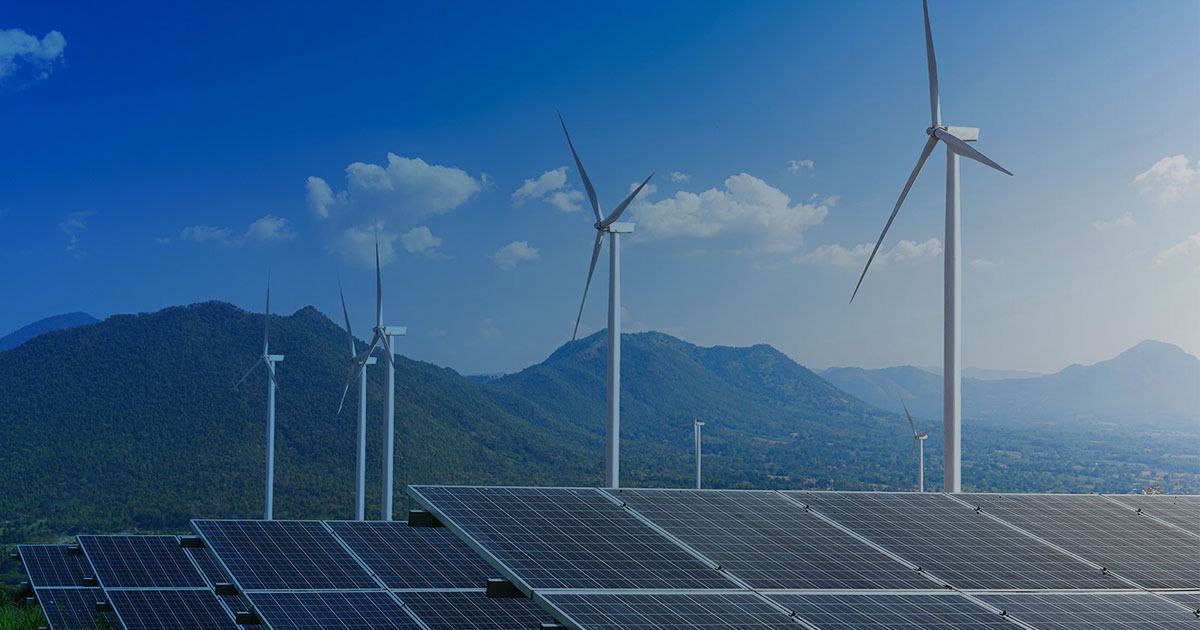
Trends in energy production and consumption
Energy production is responsible for around 80% of CO 2 emissions and two thirds of all greenhouse gases, the main cause of global warming. Reducing these emissions is essential to ensure the subsistence of life on the planet, therefore, the Paris Agreement has proposed that each country determine its own objectives in order to keep the increase in average global temperature below 2 degrees with relative to pre-industrial levels and to continue efforts to reduce the increase to 1.5 degrees.
Notwithstanding the obvious need to reduce emissions caused by the energy industry, we face the contradiction of having to increase energy production. To understand the challenges we face, we must consider the following:
- That the constant supply of energy is necessary for the enjoyment of human rights such as health, food, access to information, communication and transportation, which are essential to guarantee a dignified life for every person.
- That both the International Energy Agency and the largest companies in the energy sector agree that the demand for energy will tend to increase throughout the 21st century. By 2040 it is estimated that 30% more energy will have to be produced than is currently produced, this is equivalent to adding a new China and India to the current electricity demand.
- It is estimated that by 2030 there will still be 675 million people without a constant supply of energy, so there are still many homes to which the energy distribution network must be extended.
- Electricity consumption bands : Minimum and maximum consumption limits are imposed, in this way, whoever exceeds the maximum limit of electricity consumption will suffer a penalty in the price to pay, while customers whose consumption is less than the minimum limit, will enjoy a reduction on your monthly bill.
- Promotion for the consumption of low-consumption products : This promotion can be via tax exemption, such as the one applied by the Law for the Regulation of the Rational Use of Energy on a whole series of products such as fluorescent light bulbs or solar panels.
- Prohibition of non-efficient electrical products : Such as Directive 011 of the Ministry of Environment and Energy that prohibits public institutions from purchasing incandescent light bulbs and any other equipment with low energy efficiency. Or the general prohibition that exists on these products in other countries.
- Establish maximum limits on consumption : Like the Law for the Regulation of the Rational Use of Energy, which establishes a maximum limit for electricity consumption by industry and whoever exceeds it, must present a plan for the gradual reduction of consumption.
- Construction and conditioning:
- With the use of climate control means such as adhesive solar filters on windows, the thermal impact of solar radiation on the interior of the building can be reduced and dependence on air conditioners can be reduced.
- In terms of lighting, the interior arrangement of buildings in such a way that natural light is properly used reduces dependence on artificial light for up to 12 hours.
- Adoption of suitable equipment:
- When it is not possible to completely avoid the use of air conditioners, it should be taken into account that centralized systems tend to use less energy than individual units.
- Incandescent light bulbs waste 90% of the energy in heat, while only 10% is used to produce light. Switching to fluorescent bulbs uses up to 4 times more energy and reduces the heat generated by the bulbs, which also reduces the need for air conditioning systems.
- Conscientious use of electrical equipment:
- The use of air conditioners in automatic mode to maintain a suitable temperature and at certain times, reduces the intensity of use
- The use of natural light can save up to 22% of the energy used in buildings.
- Regarding the use of electronic equipment, simple measures such as the adoption of black screen savers, sleep times and even automatic shutdown of equipment in disuse, generate a significant reduction in energy consumption.